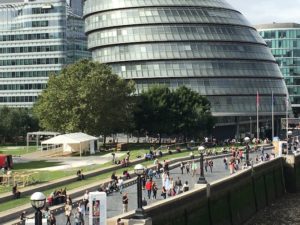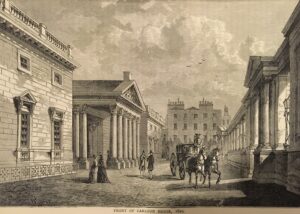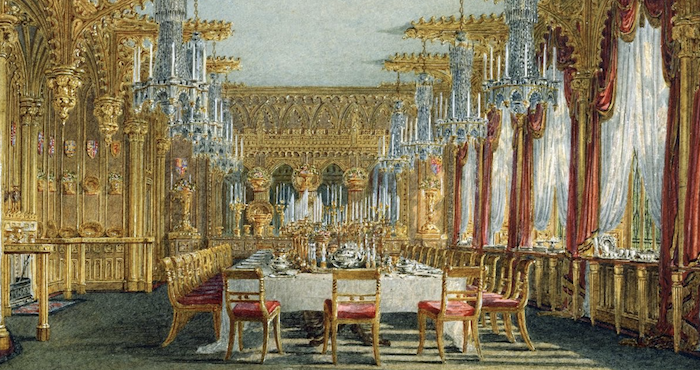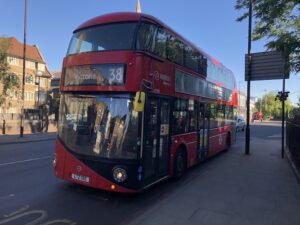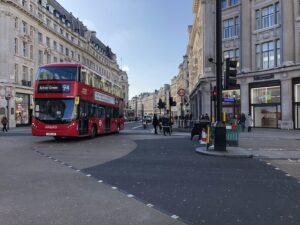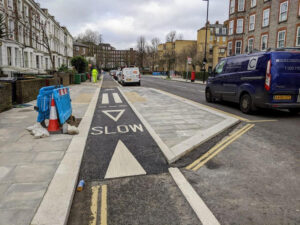Sadiq Khan attempting to hold Whitehall to ransom, or a partisan pre-election power grab on the part of the government? Either way, the reality was that a bailout for Transport for London had to happen, given the structure of the organisation and, unlike almost every other major city transport system, its almost total reliance on fare income.
By any standards, TfL is a big business at the heart of the capital’s and, arguably, the UK’s economy: more than three billion London Underground and bus passengers a year – there were five million journeys on the Tube on just one day last November – and annual operating costs of over £6 billion out of a total budget, including capital spending, of almost £10 billion.
As the Mayor and TfL regularly point out, it now receives no operating subsidy from government. In a “self-sufficiency” plan agreed between Prime Minister David Cameron and then Mayor Boris Johnson in 2013, revenue grant worth £700 million a year was progressively axed.
The system therefore depends almost entirely on more than £5 billion in fares and £1.2 billion in other revenue annually to cover its costs. By contrast, fare income contributes only 41 per cent of the costs of New York’s system, and 36 per cent of the Paris network. So a collapse in income form fares inevitably meant a cliff edge sooner rather than later – this week, in fact, as officials told the TfL finance committee. With TfL structured as a local authority, legally obliged to run a balanced budget, there was only one place to turn.
Without a bailout, officials would have no option but to issue the Section 114 notice required when a local authority’s spending is set to exceed resources available – setting in train a freeze on all but essential spending and significant service cuts.
Khan’s own hands are not entirely clean. His bus and Tube fare freeze has seen an estimated £640 million revenue foregone since 2016 – though it has helping to stave off the sort of falls in bus usage seen elsewhere in the country – and Crossrail delays are costing up to a further £1 billion or more in lost fares. And TfL does have access to business rate cash supporting its capital programmes, and mayoral council tax to bridge budget gaps.
But while TfL’s revenue position was undoubtedly not as robust as it might have been – a situation recognised by Khan himself when he bowed to pressure to scrap his blanket fares freeze policy earlier this year, proposing to maintain it post-election for bus users only – the 90 per cent fall in income since stay-at-home measures were announced left the operator, burning £600 million a month and nudging up against its £1.2 billion cash reserve, in uncharted territory.
Not so much a ransom demand as a straightforward outlining of the legal position then, leaving the ball very much in the government’s court. Its choice was to come up with a support package, as it had done for other transport operators round the country, or see TfL collapse just as Londoners were being urged to get back to work.
“We were always prepared to put more money into keeping tubes and bus services running in London and helping the travelling public stay safe,” a government spokesperson said today. But the £1.6 billion bailout – £1.1 billion cash and a £505 million loan – comes with a significant clipping of Khan’s wings. Fares on buses as well as the Tube will see above-inflation increases from January, shortly before the rescheduled mayoral election.
Ultra Low Emission Zone charges and the Congestion Charge will be back in force next week, with the latter hiked to £15 from 22 June and payable seven days a week, with longer operating hours. Free travel for schoolchildren will be suspended and passengers aged over 60 will no longer travel free at peak times.
The bailout also includes the setting up of a joint government and TfL “London COVID-19 task force” to get service levels up as “quickly as possible” as well as promoting traffic management for “active travel”, plus two government representatives sitting not only on TfL’s main board but also its finance and programmes and investment committees, and an “immediate” government review of TfL’s “future financial position and structure, including the potential for efficiencies”.
Labour Assembly members immediately described the deal as a “brazenly political attempt to use this crisis to undermine the Mayor”, while Khan himself called it a “sticking plaster” arrangement “making ordinary Londoners pay the cost for doing the right thing on Covid-19”. Most significantly, it only runs until October, when the cliff edge will be back, TfL will perhaps be in an even more precarious position, and longer-term questions will be emerging.
Pre-crisis, in an uncertain economy still overshadowed by Brexit risk and with population growth slowing, public transport growth had already been levelling off, with income shortfalls affecting not only funding for services but also investment. Cost overruns on Crossrail were falling on TfL, and with overall debt in the region of £12 billion the agency was up against its borrowing limits agreed with government. This week’s bailout adds more than half a billion to that total.
And TfL is cash hungry, with continuing calls on capital investment merely to keep its networks functioning. Vital signalling upgrades to the Piccadilly Line were already on hold, while replacement of the line’s 60-year-old trains was going ahead only after a 20-year sale and leaseback deal on Crossrail trains.
Station upgrades and future schemes including Crossrail 2 and the £3.1 billion Bakerloo line extension from Elephant & Castle to Lewisham were in the balance too, with TfL’s recently agreed 2019-2024 business plan forecasting a funding gap of almost £50 billion over the coming two decades.
TfL estimates suggest a further billion or more may be required to keep services running through the winter, and the demands of economic recovery will further underline the need for some serious infrastructure spending as well as revenue support.
Supporters of a Mayor-bashing approach to bailout might want to be careful what they wished for. As Khan says: “The old model for funding public transport in London simply does not work in this new reality. Over the next few months we will have to negotiate a new funding model with government – which will involve either permanent funding from government or giving London more control over key taxes so we can pay for it ourselves – or a combination of both.”
OnLondon.co.uk is doing all it can to keep providing the best possible coverage of London during the coronavirus crisis. It now depends more than ever on donations from readers. Individual sums or regular monthly contributions are very welcome indeed. Click here to donate via Donorbox or contact davehillonlondon@gmail.com. Thank you.


